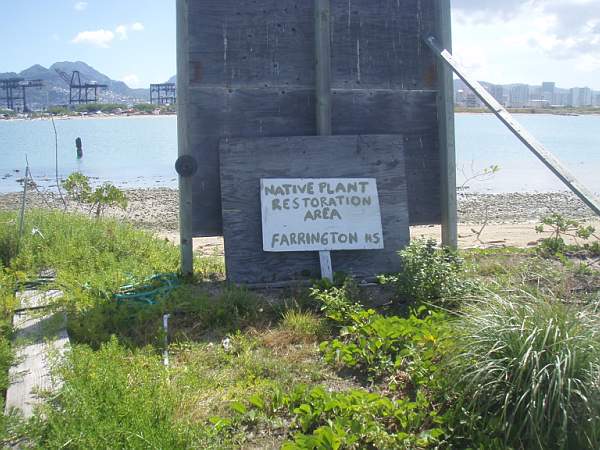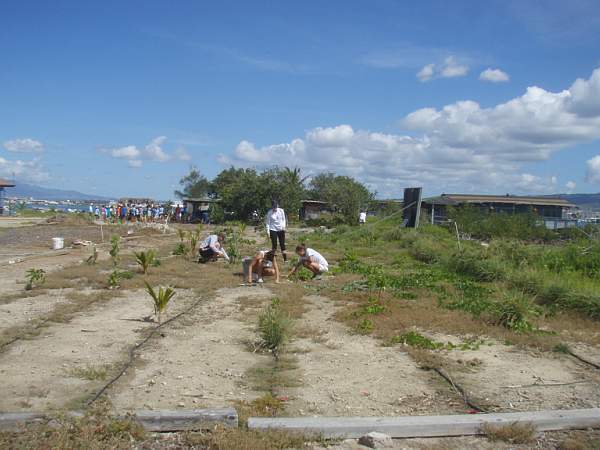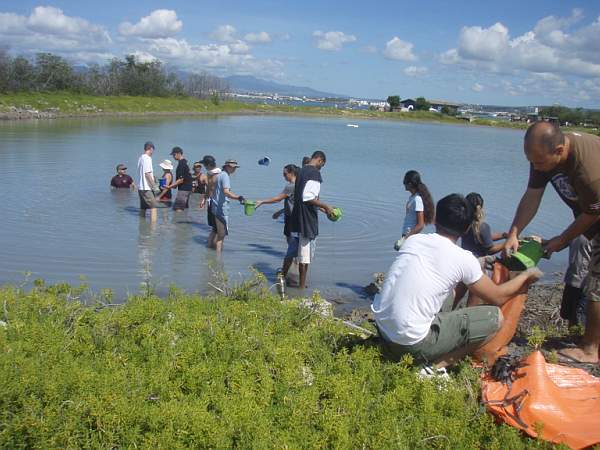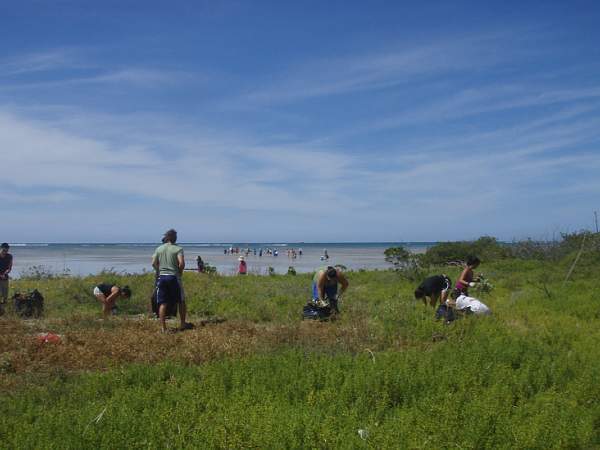Published in the Ocean Watch column, Honolulu Star-Advertiser © Susan Scott
April 27, 2009
Last week on Earth Day, I paddled an outrigger canoe to the mainland and didn’t even break a sweat.
The island I paddled from was Mokauea, a 3-acre islet in Keehi Lagoon, and the mainland, as it is affectionately called by Mokauea residents, was Oahu.
The voyage was short but mileage isn’t everything. My five-minute trip to that tiny island transported me from our bustling city to Oahu’s last Hawaiian fishing village. There I experienced the best of Hawaiian culture, marine conservation, native plant ecology and volunteerism.

Keehi Lagoon, a drastically dredged harbor, is notorious for airplane noise, water pollution and derelict boats.
But before the lagoon was so changed, its reefs were abundant with marine life. White crabs and slipper lobsters thrived. Hammerhead sharks chased mullet by the thousands into shallow water, and ulua (jacks), papio (young jacks) and nenue (chubs) swarmed around Mokauea Island.
In early 1941 the state began dredging Keehi Lagoon. After Dec. 7 the Army Corps of Engineers took over and dug a chain of channels called the Seaplane Triangle. This excavating, along with the altering of Honolulu Harbor, the building of the airport’s reef runway and the creation of Sand Island, buried several of the lagoon’s islands.
A few, however, survived and continued to support a community of fishing families.

The state’s treatment of those families in the 1970s is an ugly story involving no-notice evictions, burned-down houses and homelessness. The public outcry over such tactics resulted in the remaining families getting a 65-year lease to Mokauea, providing they take care of it.
Today, four families still live there. Their weathered, wooden houses sit on stilts at the island’s edge, offering a glimpse into a lifestyle of the past. But alien plants choke the land, the fishpond contains silt and trash lines the shores. A few people couldn’t possibly take care of the island alone.
Donna Kahakui, a champion canoe paddler, wanted to help. In 1997 she created an all-volunteer organization, Kai Makana, the mission being to educate and motivate people to protect, preserve and respect the ocean. The recovery of Mokauea Island became one of Kai Makana’s long-term projects.
With the aid of several public and private schools and universities, Girl Scout troops, the Polynesian Voyaging Society, environmental groups and others, word is out that the island and its residents need helping hands. And that’s what the many volunteers were doing there last week on Earth Day: lending their hands — and backs — to make a difference.
Slowly but surely it’s working. Over the past few years, people planted native gardens, cut down kiawe and mangrove trees, picked up trash, lifted fishpond silt by bucket and removed alien seaweed by hand. Besides helping resident families fix up their island, volunteers want to preserve this part of Hawaiian culture for future generations.

You can get event schedules and learn more about Kai Makana at www.kaimakana.org.
My little voyage put Keehi Lagoon in a bright new light for me. It also put a paddle in my hand and a canoe seat under my bottom for the first time.
The volunteers of Kai Makana helped make this Earth Day my best one ever.
